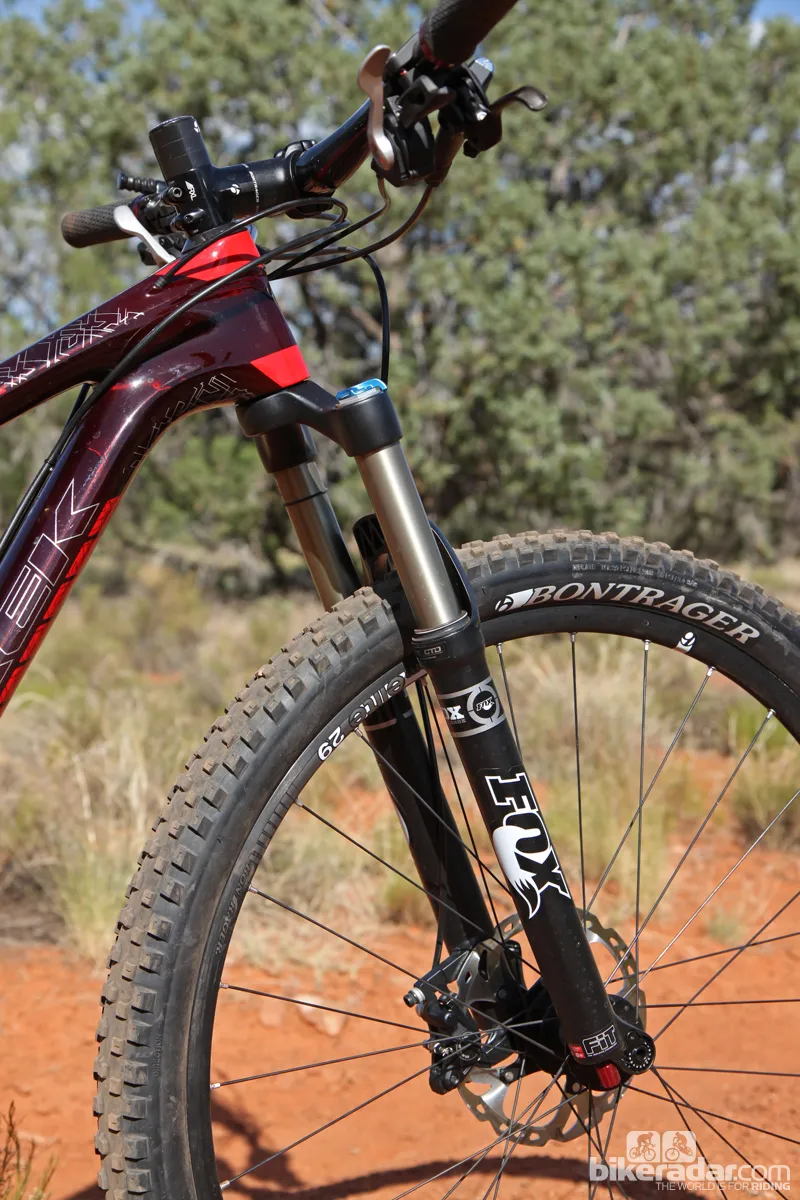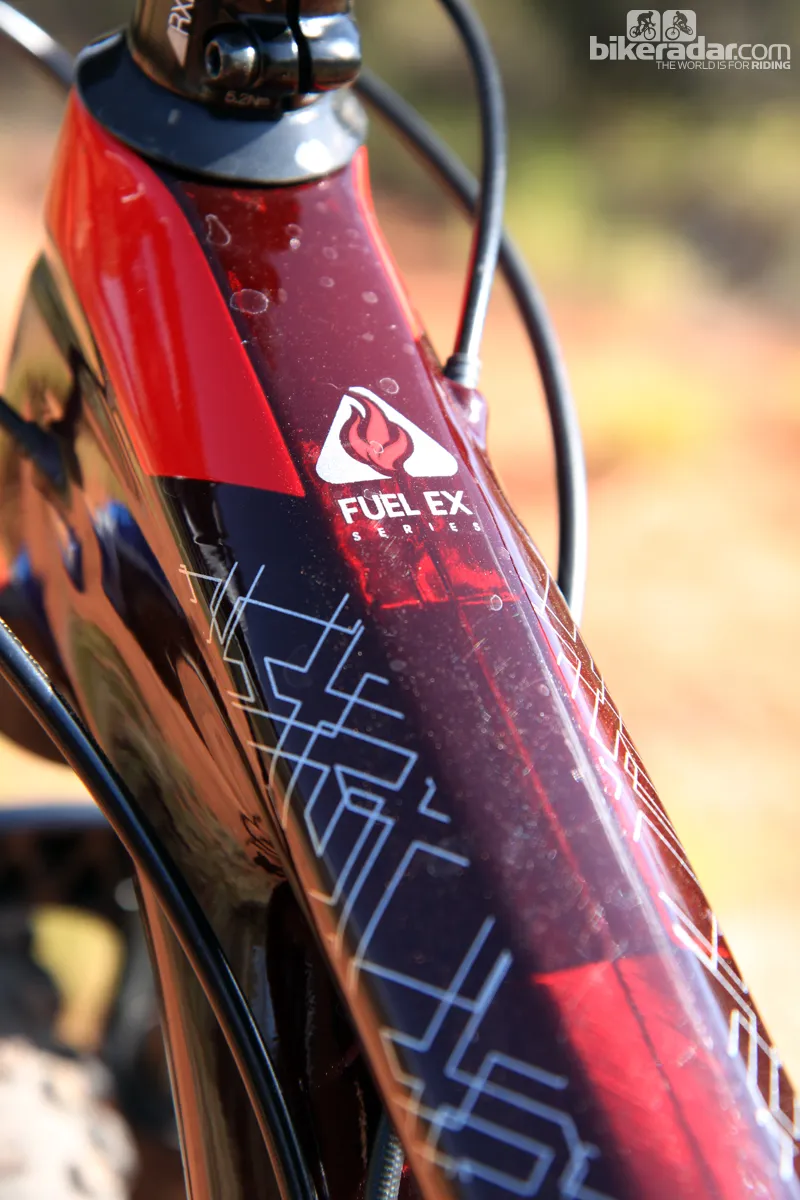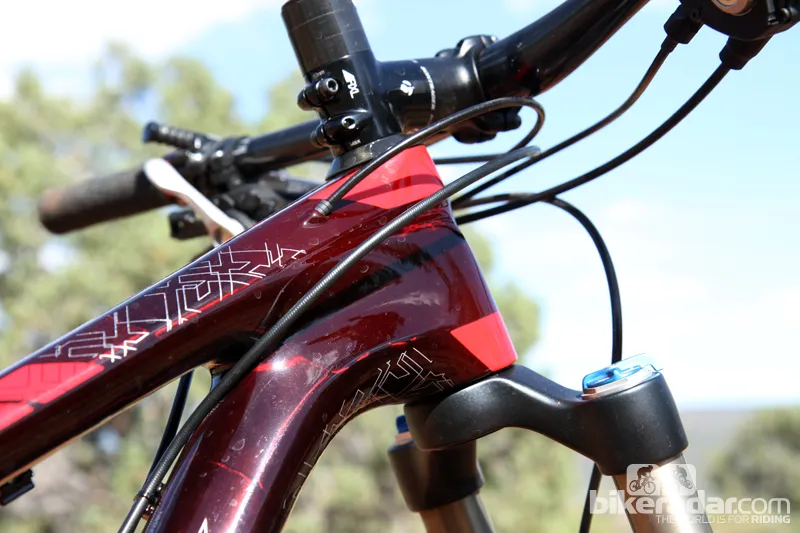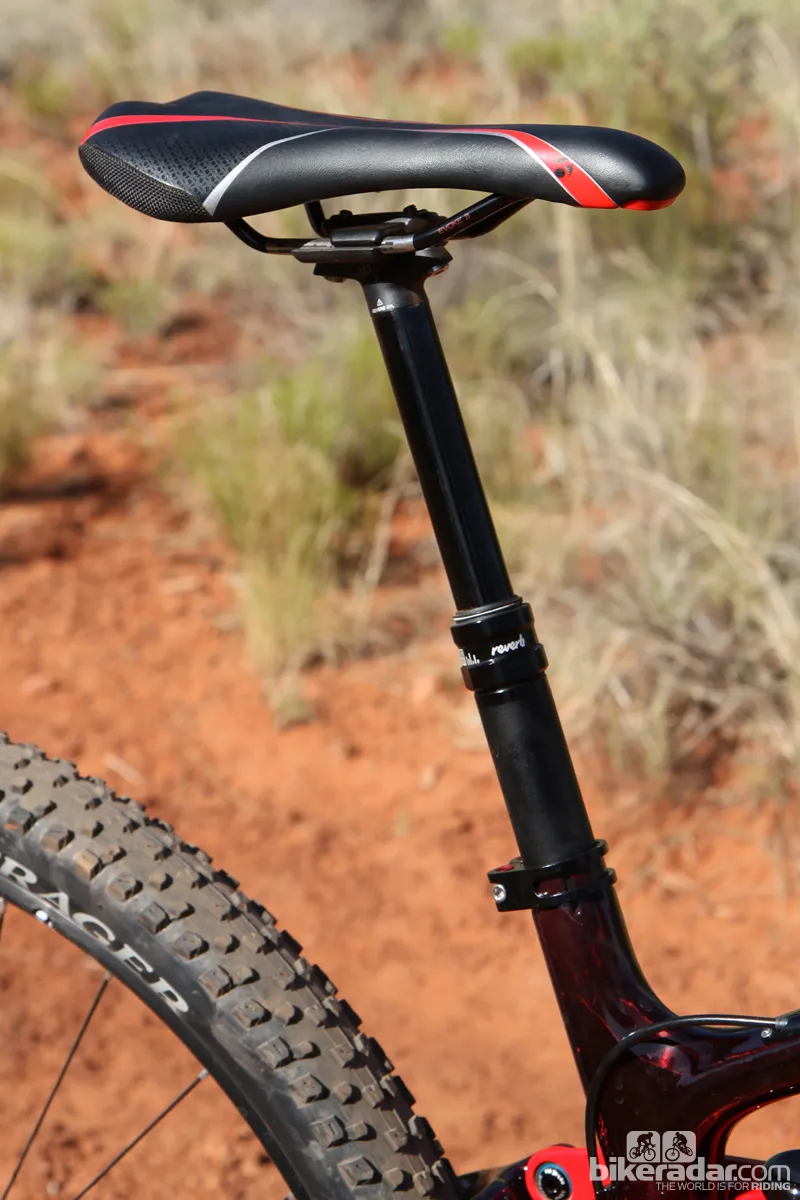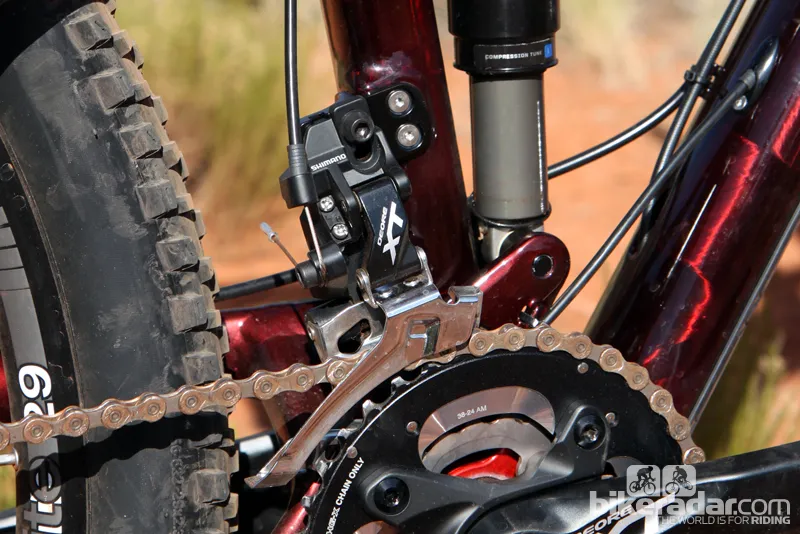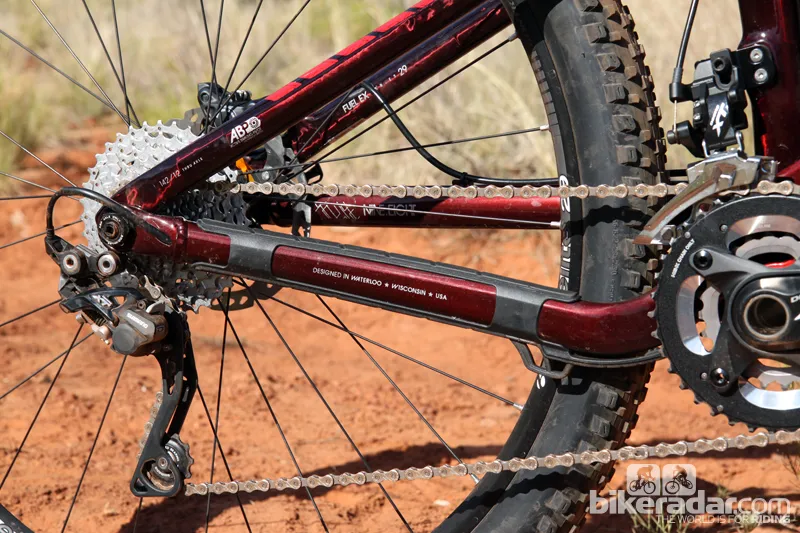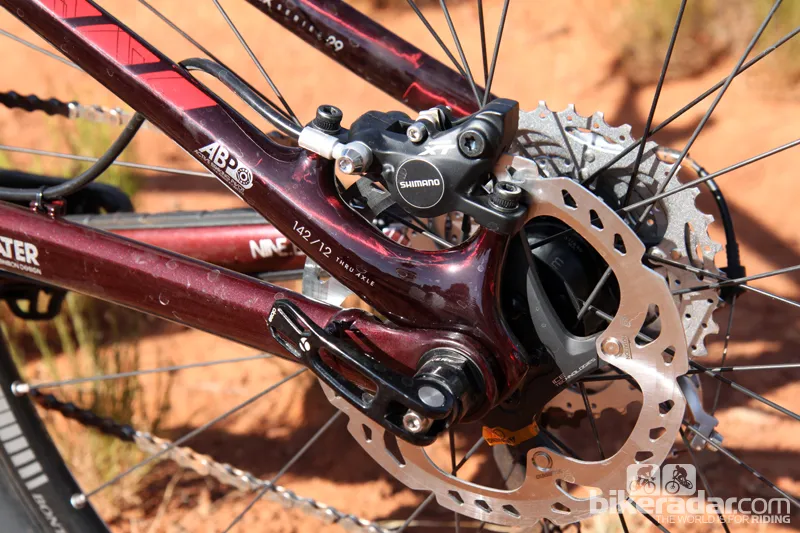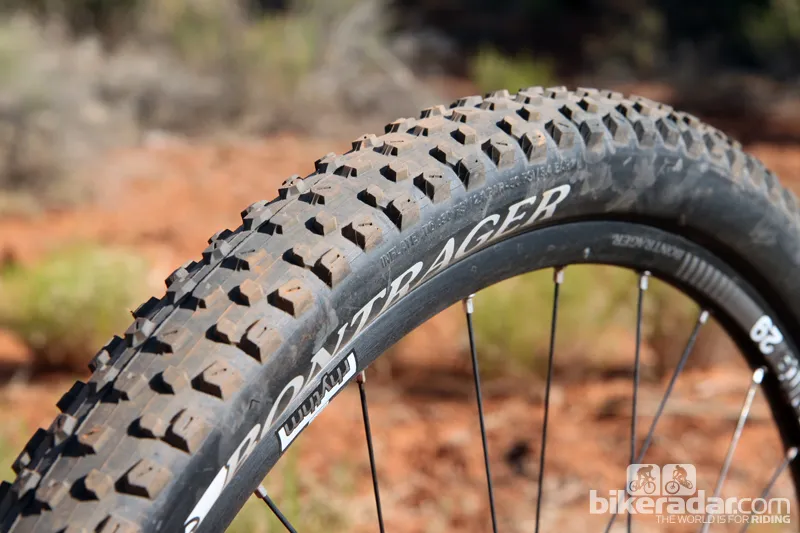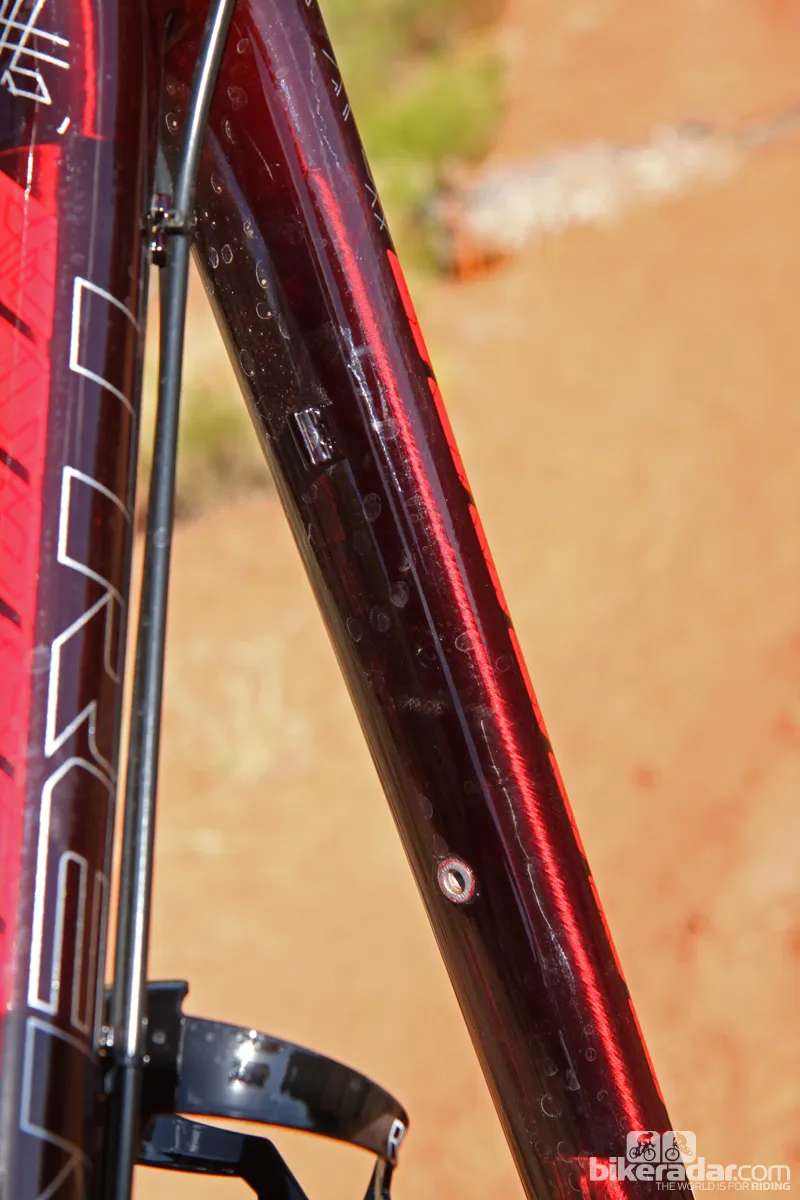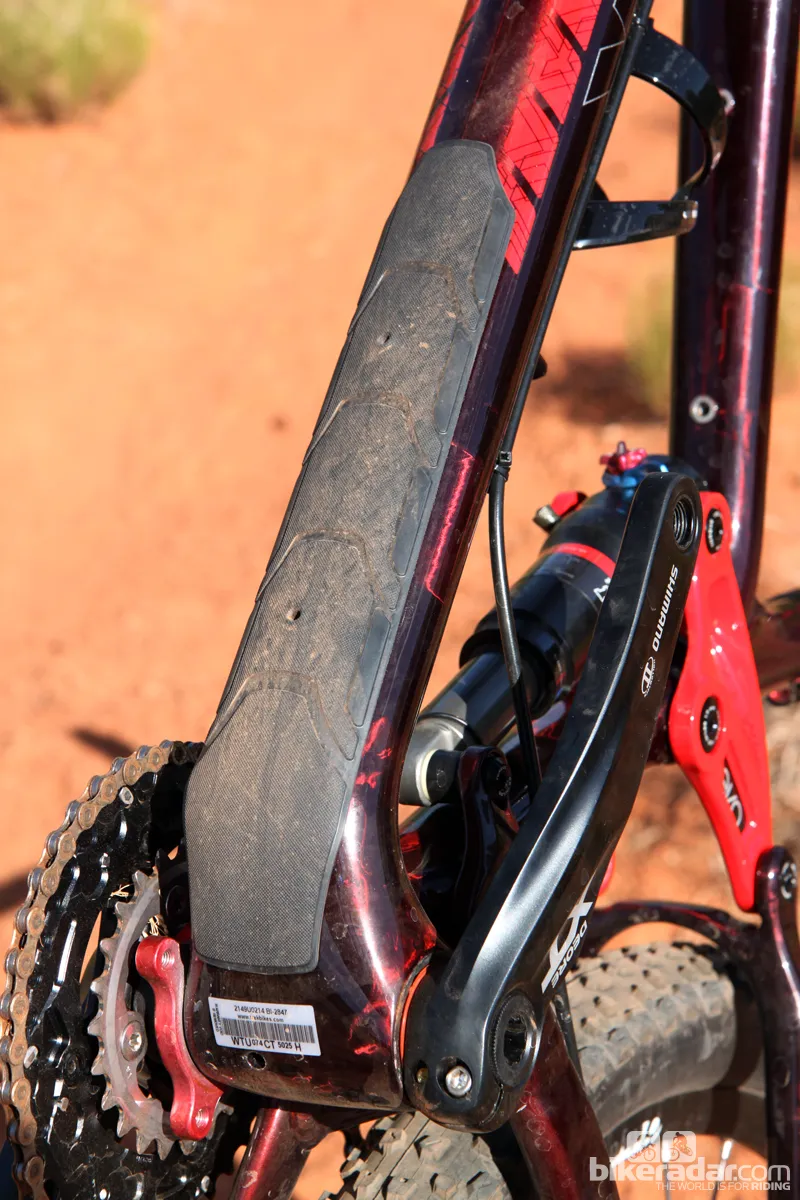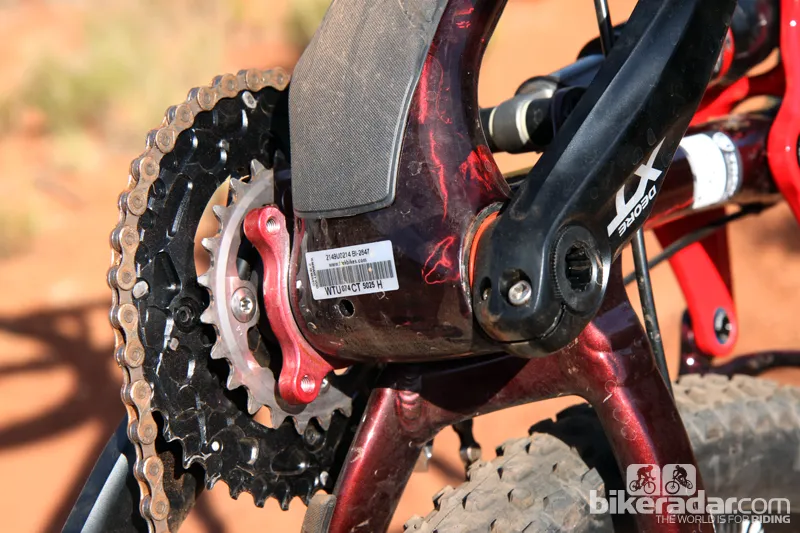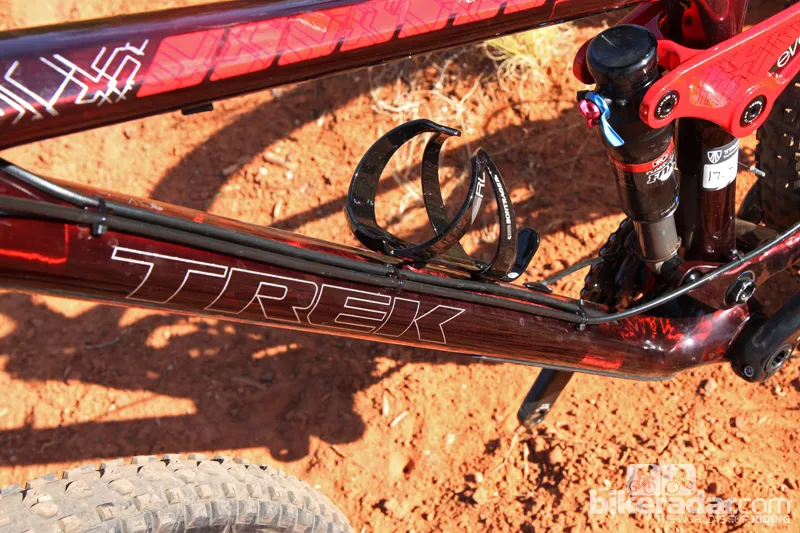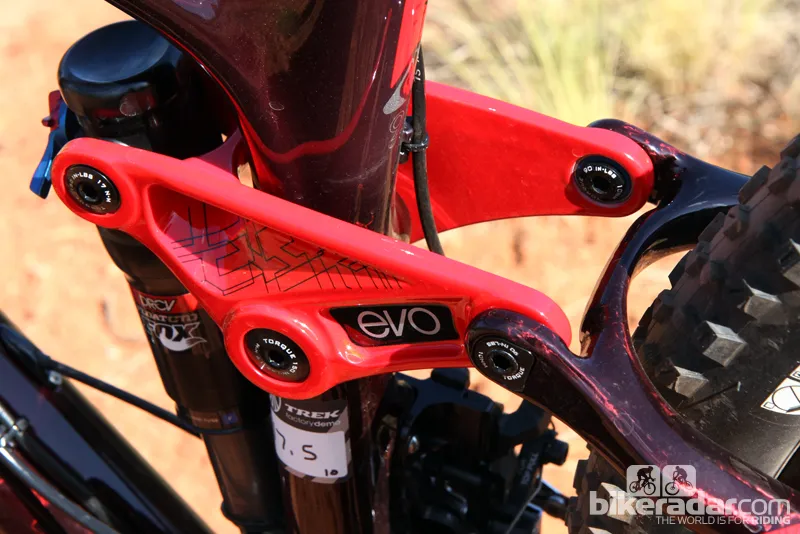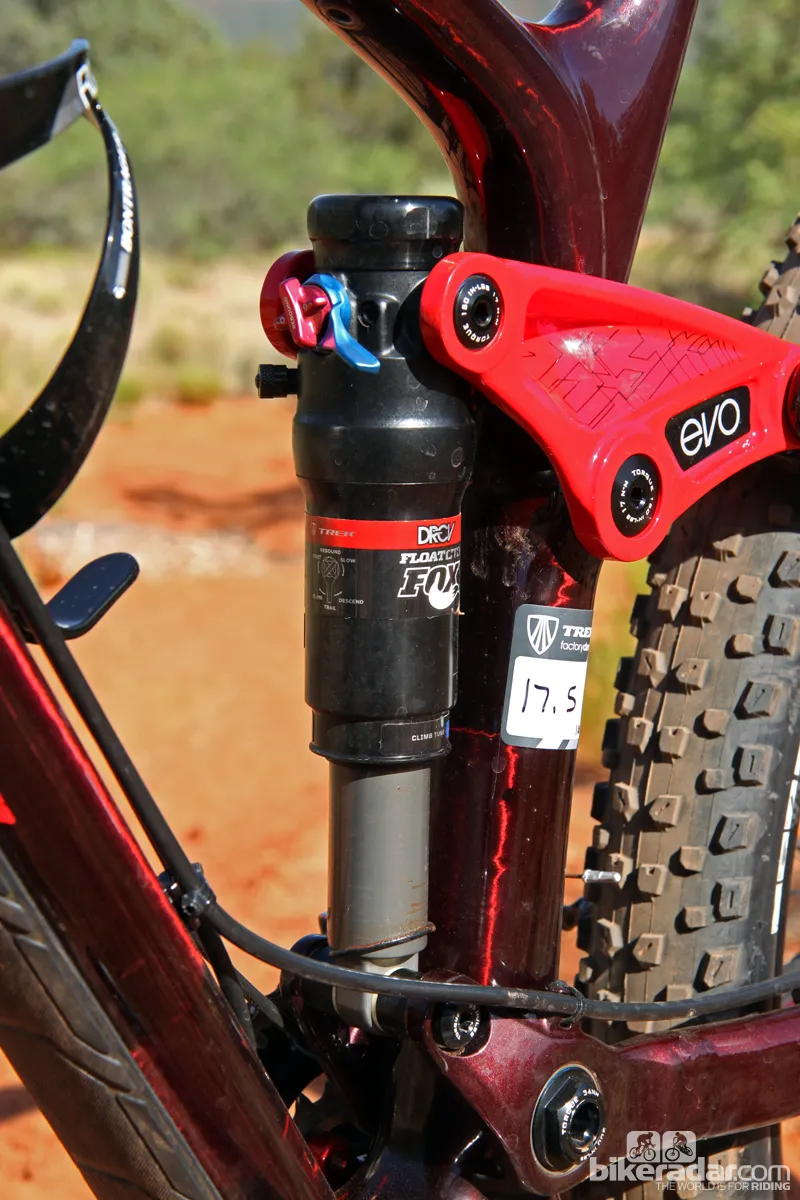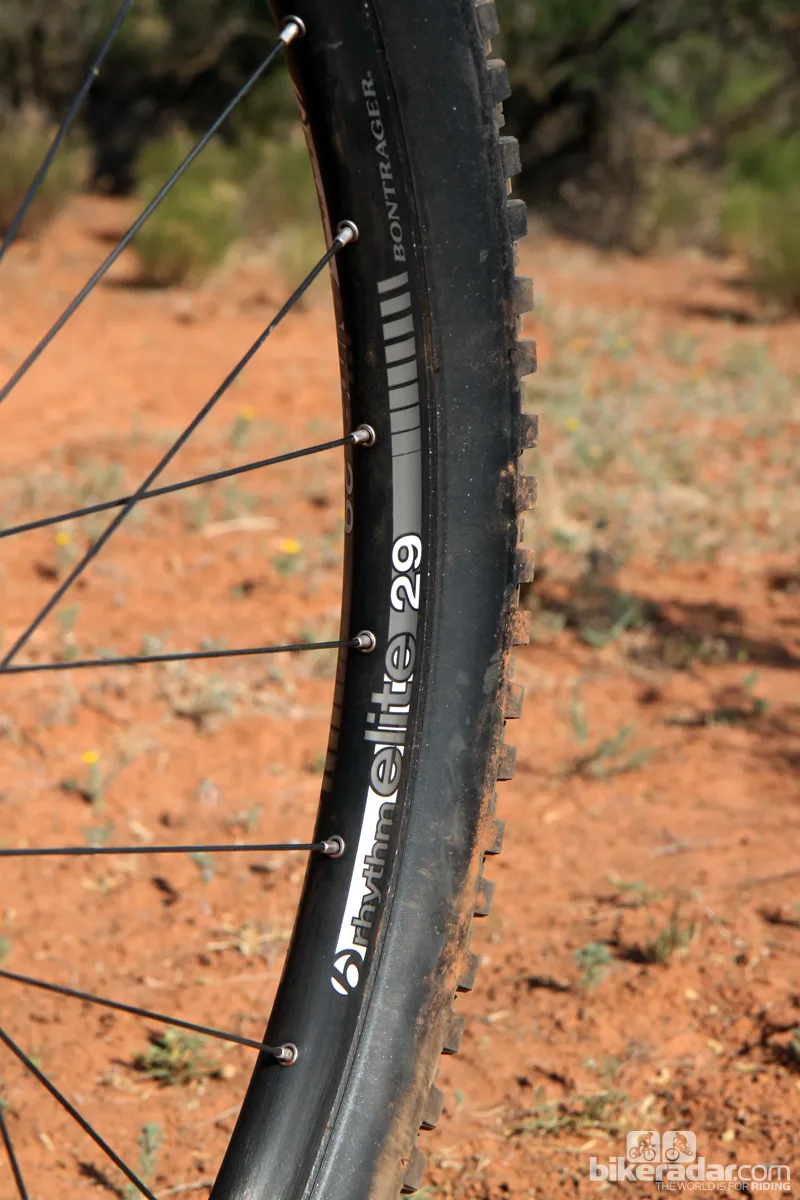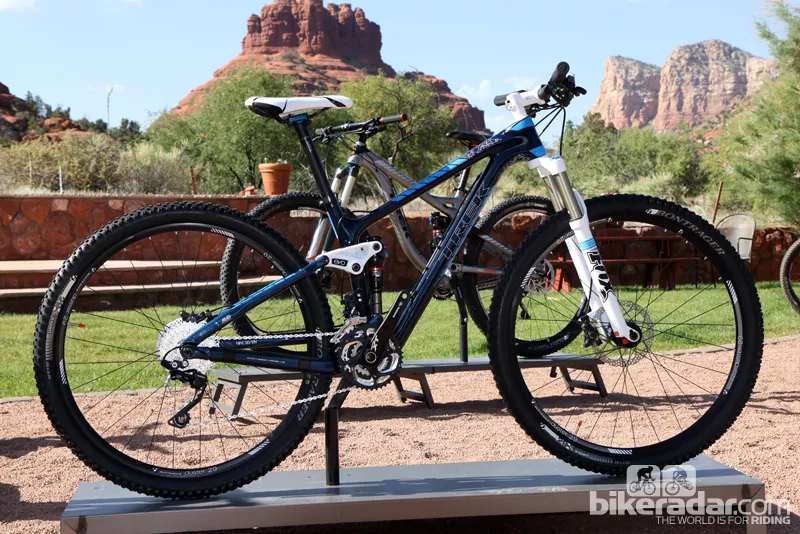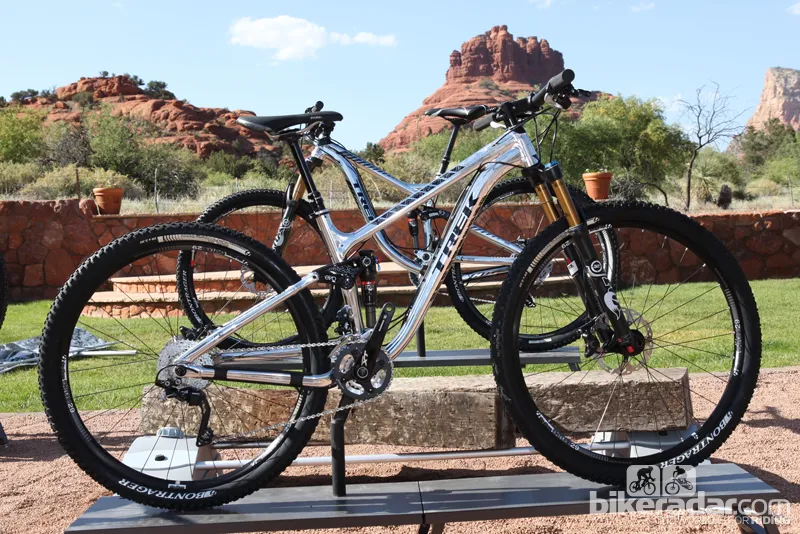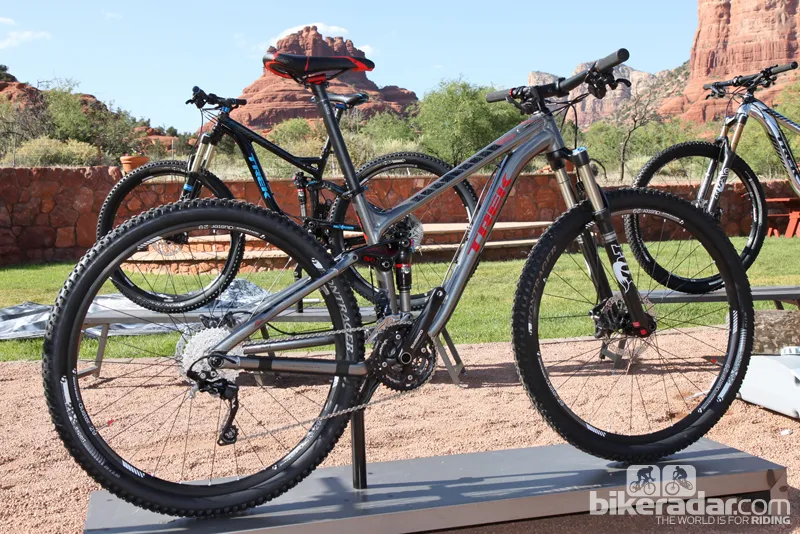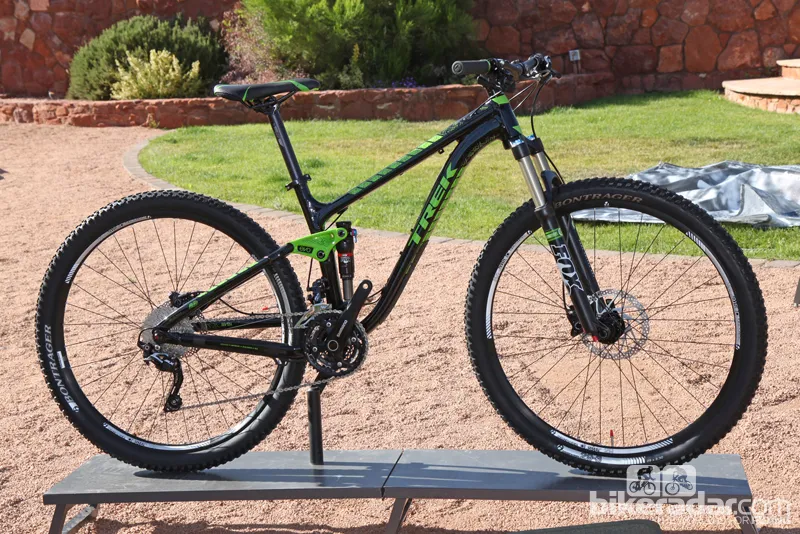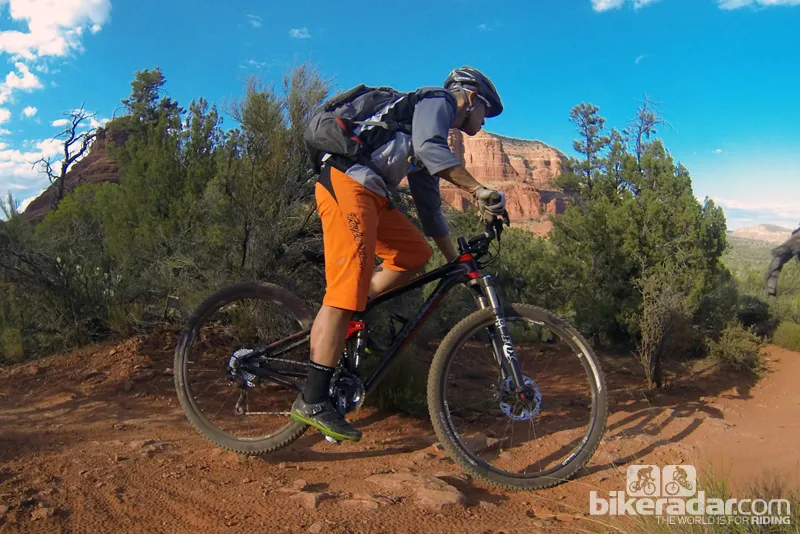Trek's new 120mm-travel Fuel EX 29 chassis pushes aside the shortcomings of the outgoing Rumblefish and instead manages to faithfully mimic the playful feel of the 26in Fuel EX despite the bigger wheels. It's undoubtedly a fun bike on the trail and, just like its smaller-wheeled cousin, it also seems highly capable. Toss in the very good pedaling performance and you end up with an immensely versatile machine.
Ride and handling: fantastic geometry, suspension with lots of pop
Trek has done a great job on the Fuel EX 29's geometry. Bottom bracket height is the same as the 26in Fuel EX at a rather low 33.8cm (13.3in), giving the bike a stable and planted feel through corners plus the ability to quickly transition from edge to edge. The chain stays unfortunately grow more than an inch to a rangier 452mm, though – the same as on Trek's cross-country Superfly 100 and more than 20mm longer than Specialized's much longer-travel Enduro 29.
- Price: US$5,249/£4,199
- Weight: 12.37kg (27.27lb) as tested, 17.5-inch size, without pedals
- Available sizes: 15.5, 17.5 (tested), 18.5, 19.5, 21.5, 23in
- Pros: Fantastic rear suspension, playful handling, well sorted details
- Cons: Chain stays could still be shorter, weighty wheels
- BikeRadar verdict: TBD pending long-term testing
- More information: http://www.trekbikes.com
Even so, for whatever reason the Fuel EX 29 has a much more playful feel than the Superfly despite also having a head tube angle slackened a bit to 69.5 degrees. Perhaps due to the Fuel EX 29 suspension's less dramatically progressive spring rate (which would tend to settle a little further into the travel with a rearward weight shift), we found it notably easier to manual and wheelie when needed on Sedona's rock and ledge-strewn trails. Other journalists at the bike's launch echoed this opinion, too.
Overall, the bike is playful and flickable, relishing in medium-sized drops and small doubles and happily attacking bermed corners.
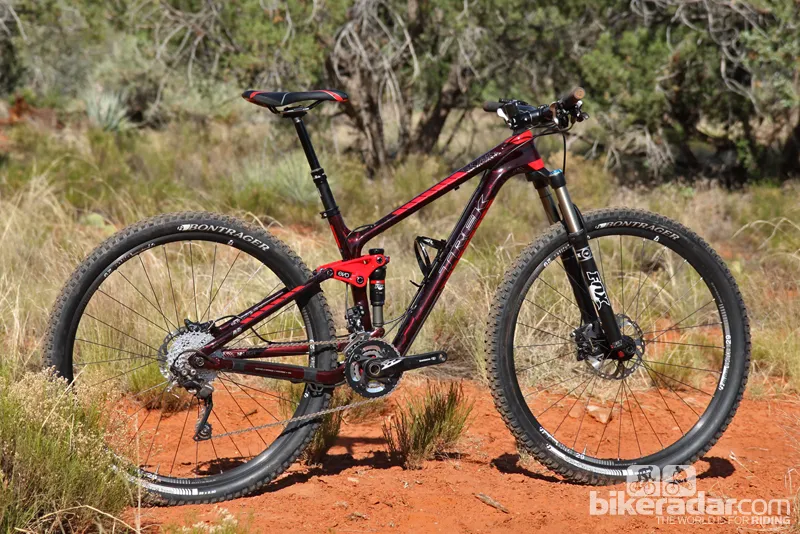
Trek builds upon the success of the Fuel EX 26in bike with 29in wheels and appropriate geometry
The relatively long wheelbase and big 29in wheels still make for a lot of bike end-to-end to pilot through ultra-tight switchbacks. However, Trek's G2 fork geometry with its increased 51mm crown offset makes for a lighter-feeling front end at lower speeds so those tight, slow-speed sections are still manageable as long as you've got the room to maneuver.
As on the 26in Fuel EX, rear-suspension performance is excellent. The feel is slightly firm off the top but the spring rate is steadily progressive with lots of pop through the mid-stroke and a deep well towards bottom-out thanks to the Trek-exclusive DRCV-equipped Fox rear shock that makes the bike feel like it has more travel than it does. Trek has ditched the matching DRCV-equipped Fox fork, however, instead going with the standard version whose now-flatter spring rate supposedly more closely mimics the rear end without requiring the more expensive custom bits.
Interestingly, the Fuel EX 29 also seems to pedal more efficiently than the Superfly with less bob and wallowing, especially when powering in the big ring, although in fairness we didn't spend as much time dialing in rear shock pressure as we did on the Superfly so we'll continue to investigate this once our long-term sample arrives. And although it's efficient, don't expect acceleration to be on par with a true cross-country race rocket as the wheels and tires are notably heavy.
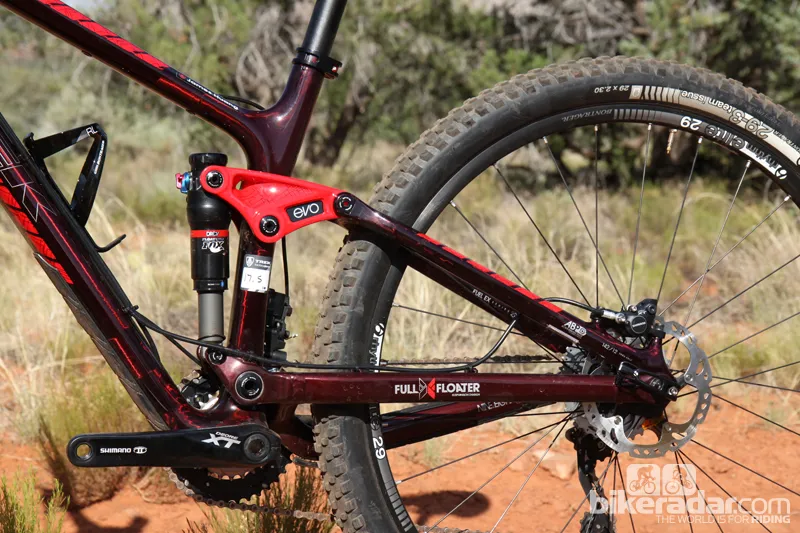
The new Fuel Ex uses the same Full Floater, ABP and asymmetrical chain stays as the 26in version
Rear triangle stiffness is very good overall but there's still some noticeable flex in the front triangle in high-load situations. We noticed the front end loading up when negotiating tight corners at the bottom of steep downhills as well as some wiggle when muscling the bars around.
That's perhaps the price to be paid for such a low frame weight, however. Trek claims the top-end Fuel EX 29 9.9 frame weighs just 1,920g (4.23lb), with the rear shock adding another 350g (0.77lb) or so. Tack on another few grams for our Fuel EX 29 9.8 tester's aluminum chain stays and that would put it about 180g heavier than the comparably sized Superfly 100 Elite SL – a sacrifice we're more than happy to pay for the enhanced capabilities, sturdier feel and more versatile handling.
Frame: Trek's usual bag of tricks
The Fuel EX 29 9.8's carbon fiber frame digs heavily into Trek's arsenal of frame features. The rear end is built with the company's Full Floater dual-dynamic shock mounts for a more finely tuned spring rate, ABP (Active Braking Pivot) 142x12mm thru-axle rear dropout pivots to minimize the effects of braking on the suspension, the chunky Evo rocker link up top, and asymmetrical chain stays – made of TIG-welded aluminum in this case to save a bit of money.
Down below is the extra-wide BB95 bottom bracket shell with bearing seats molded directly into the structure (thus eliminating the need for separate cups) and an extra-wide down tube and seat tube to match. Bearing seats are molded directly into the tapered head tube as well.
Derailleur cables are internally routed while the rear brake and dropper post lines are attached externally via tidy zip-tie mounts. Stealth-type dropper post housing is run alongside the down tube before entering the frame just ahead of the bottom bracket shell; otherwise, it's run conventionally underneath the top tube.
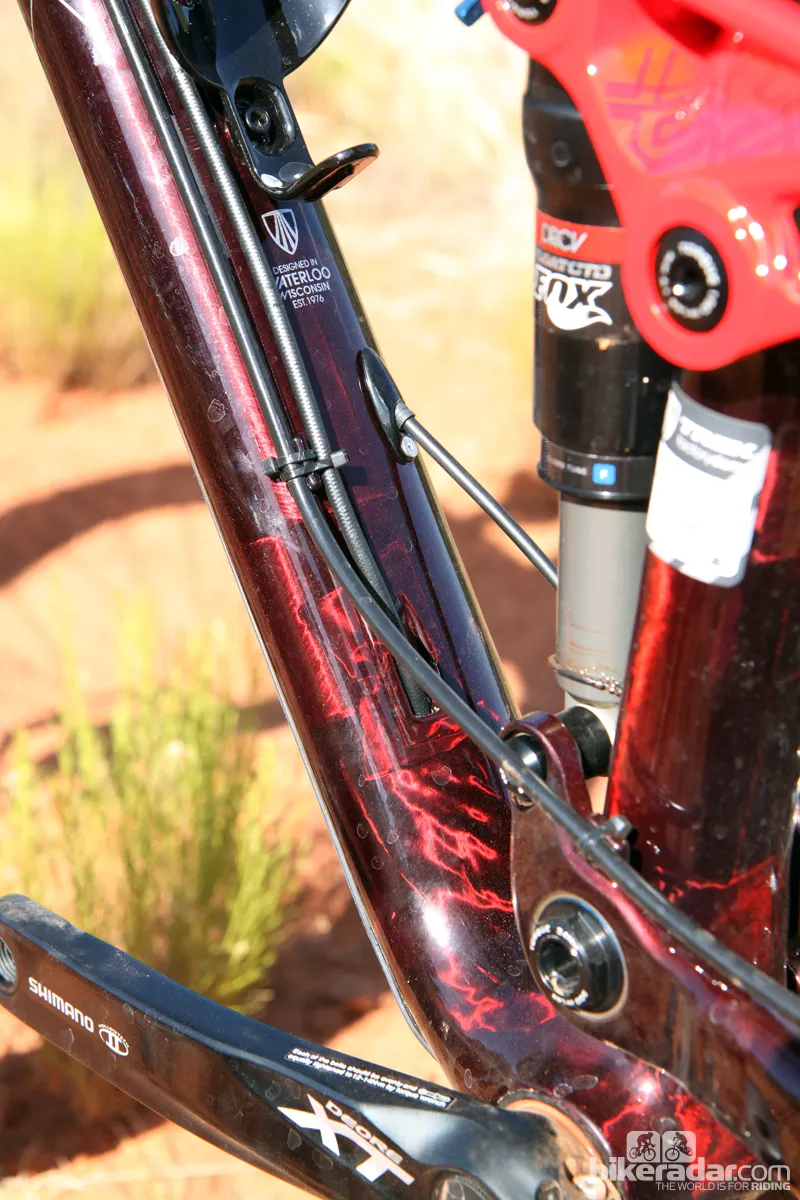
Cable routing is a mix of internal and external
At long last, Trek also finally includes ISCG tabs for riders that want to run a chain guide for extra security.
Other features include hefty plastic armoring for the underside of the down tube and driveside chain stay, large-diameter pivot axles throughout the rear suspension, and a direct-mount front derailleur with a fully removable tab that provides a clean look when running 1x drivetrains. Not to go unmentioned is the paint job's tinted clear coat, which glimmers in direct sunlight.
Equipment: Solid Shimano Deore XT and Bontrager bits
Trek goes with the safe and solid route spec-wise on the Fuel EX 29 9.8, including a nearly complete Shimano Deore XT 2x10 drivetrain and matching hydraulic disc brakes with 180/160mm front/rear Ice Tech rotors (but no finned pads). Shift performance is flawless front and rear – even under full power and with the KMC X10 chain – and Shimano's brakes remain the current gold standard thanks to their generous power, superb modulation, quiet operation and perfect one-finger ergonomics. If these pan out like virtually every other Shimano brake we've used recently, they should be trouble-free, too.
The RockShox label is found on the tidy-looking Reverb Stealth dropper post and Fox provides the excellent Float CTD front and rear suspension components but aside from that, it's all Bontrager. We've found the Evoke saddle to be very comfortable in the past and while we'd prefer something a little wider than the 720mm-wide Race X Lite model included here, it's workable and gets the job done. Likewise for the forged aluminum Race X Lite stem, which we would prefer to see swapped with the larger-diameter Rhythm model for its extra torsional stiffness.
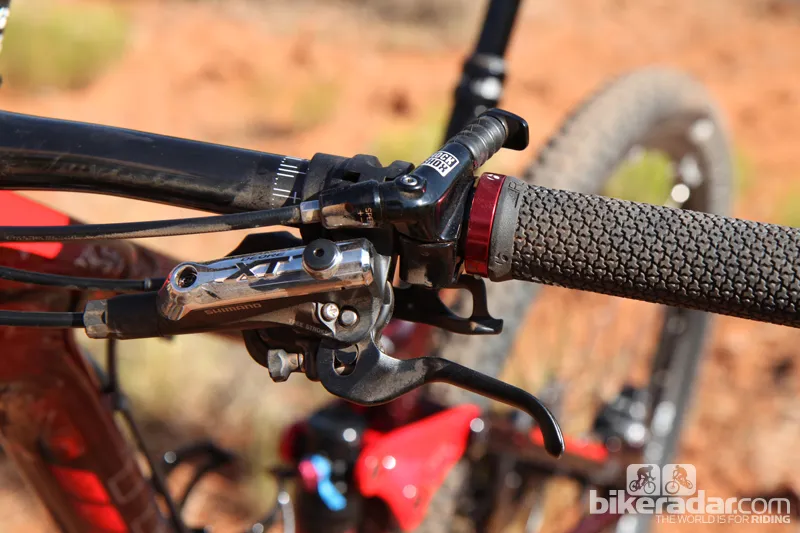
A Shimano XT drivetrain, Bontrager components, a RockShox Reverb dropper post and Fox suspesion round out the package
Bontrager's tires have come a long way in recent years as the stock XR3 Team Issue treads offer good grip even on loose-over-hardpack conditions in the Arizona desert – something we wouldn't have dreamed of saying just a few seasons ago – while still retaining good rolling characteristics, too. Kudos to Trek for specifying meaty 2.3-inch widths front and rear, too.
Bontrager just announced a brand new Rhythm Elite wheelset but stock Fuel EX 29 9.8s will unfortunately come with last year's version for now, which are 200g heavier at 2,010g per pair (claimed) and have a relatively lazy 15-degree engagement speed.
Total weight for our test bike was a little more than we expected at 12.37kg (27.27lb) without pedals – not bad but not great, either, particularly given the US$5,250 asking price.
